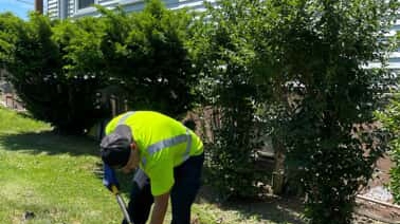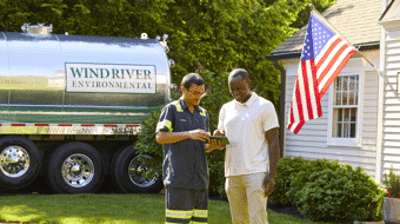Fall is almost here! While that means it’s soon going to be time for foliage, pumpkin spice, apple picking, and more, it also means winter is on its way. If you live in a colder climate, fall and winter weather can wreak havoc on your plumbing system and cause costly damages. Fortunately, with a little preparation, you can winterize your plumbing this fall, so your system is safe and secure when the cold is at your door.
Insulate Your Pipes & Fix Any Leaks
The greatest threat to any plumbing system is always where the cracks are. Any leaks will be the first thing to freeze over when cold weather arrives. Leaks usually happen where your pipes are weakest. In the winter, the ice will expand the pipes as it freezes, possibly bursting them. The last thing you want to do when it’s cold is deal with a burst pipe. While it’s warm though, spotting leaks will be much easier because any water drips will be easier to spot.
Inspect every pipe inside and outside of your home during the summer. Don’t forget your septic tank lid. Even the smallest leak could lead to a big problem, so don’t skip over anything, even if it looks like it could just be condensation. Have a professional fix them to be safe. It’s not worth the risk and cost of a burst pipe later on—which can be at least $1,000.
In addition, make sure your non-leaky pipes are well-insulated because even if there are no leaks, a non-insulated pipe can still freeze. This usually means wrapping the pipes in insulation foam or other materials. Again, this is best to have a professional do it to ensure maximum safety for your pipes. Be sure you know where your water main is, too. In the event that a pipe does burst, you can shut it off to prevent further damage. If you’re planning on going away during the winter, this is also a good idea to keep water from sitting and freezing in your pipes.
Get Your Septic Tank Inspected and Insulated
Septic tanks are the core of your plumbing system. If something were to go wrong in the winter, accessing an underground tank in frozen soil could prove impossible or expensive. Septic tanks need regular maintenance to stay in working order; the last thing you want before winter is to have a tank full of accumulated sludge and waste that can freeze over or overflow.
Call a professional to inspect your septic tank and empty it as the fall gets closer. Also, have them check to see if the septic tank is insulated or not. If not, have the professional take care of that too. Then you can rest easy this fall with your plumbing ready for winter.
Have Your Sump Pump Repaired and Inspected
Sump pumps keep your basement safe during the spring, summer, and fall from rain and water that could flood your basement. Though there may not be as much risk for flooding in the winter, it’s still good to proactively winterize plumbing for your sump pump.
First off, remove the discharge hose during the winter and leave it off until the weather warms, so water can’t freeze inside. Just don’t forget to re-attach it in the spring! And make sure you have a backup hose handy, just in case. It is important that you never unplug your sump pump. If a warm front comes through unexpectedly in the winter, or you get a freak rainstorm, you could end up with a flooded basement.
Clear out any gunk in the sump pump’s pit, including dirt, ice, or other debris so nothing can clog or freeze. Test it regularly too by running some water through it to ensure it still works. Make certain that your plumbing takes the water from the sump pump far away from your home, at least ten feet away from the foundation. In addition, don’t forget to keep your heat on! This will keep your basement warm and keep anything from freezing, including your pipes and sump pump.
If you notice anything wrong with your sump pump, get a professional to inspect and repair it. It’s better to be safe than sorry.
Winterize Outdoor Faucets
In the fall, plumbing can take on many different forms around your home. You probably don’t think about the little faucets outside your home as plumbing, but they are. If left unchecked in the winter, they could lead to your outdoor plumbing freezing.
Double-check in the fall that all your faucets are tightly turned off. Drain any water or hoses connected to them and store them safely away. For extra protection, you can buy styrofoam insulation kits to place around them in the winter.
Inspect Your Water Heater
Nothing is more important in the winter than keeping your heater functioning. Not only does it give you warm water and hot showers in the colder months, but it keeps your plumbing from freezing over.
Your water heater works extra hard in the winter. Flush it out and remove any sediment buildup. Anything left in the heater could cause corrosion, shorten its lifespan, or reduce heating efficiency. You can do this by draining several gallons from the faucet near the bottom of the tank. Simply connect a hose to the faucet and direct water into a nearby drain.
Check the temperature setting on your water heater’s thermostat; it should be at 120°F. Also, test your water heater’s pressure relief valve. Be careful—the water can be hot! Just lift up the lever and let it snap back. A short burst of water should flow out into the drain. If this doesn’t happen, you should call a professional to install a new valve. Additionally, if you know your water heater is more than five years old and you haven’t tested the valve, you can actually cause a leak by testing older valves that have corroded or stuck seals.
Even after you’ve looked at the heater, have a professional plumber inspect it just to get a second opinion. Take no chances with your water heater in the winter.
Get A Professional Septic Tank Inspection From Wind River Environmental
This may sound like a lot of steps in order to winterize your plumbing in the fall. But the more preventative measures you take now, the more money, time, and energy you’ll save. Wind River Environmental has professional, expert knowledge of all things plumbing to keep your home safe when it gets cold. We’ll perform thorough inspections of your plumbing and give you fair quotes on repair and replacement costs—which we can also do for you! Get in touch with us today so we can schedule an inspection on your plumbing this fall.




.2504171222540.png)

